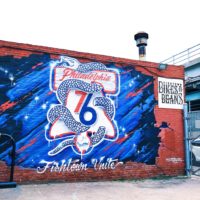There’s a new philosophy I’ve adopted. And, it’s this: If you work in digital and sports, one of the big keys to your job is packaging content in a unique way. In a world where almost everyone has access to the information and assets, your job isn’t just to distribute. Your job is to find a different (on brand) angle with the content.
We’re in a constant state of content overload and a sea of sameness. Even highlights, which weren’t widely distributed a few years ago, can feel exhaustive in feeds. Between broadcast partners, teams, leagues and even fans, distribution is not the issue. The challenge is thinking about things differently. To stand out today, one of the keys is to continue to push the envelopes of creative through design and execution.
Thanks to podcasts, audio has become a recent trend in content creation. From strong quotes at press conferences to play calls, there are a lot of different opportunities to capture and leverage audio.
One thing I’ve noticed with audio, is teams, brands, etc. tend to be creative in their execution. The blend of sound plus design (since people don’t always turn on sound), makes a powerful combination. And, it’s the perfect example of how to think about packaging content in unique ways.
If you’re looking to mix up your content and do something different, below are a few examples of leveraging audio in sport. And, they are all great examples of how to package content:
NBA On TNT’s Audio Toons
Forget watching the broadcasters sit around and talk in the studio or the broadcast booth. Listen and watch them in cartoon form. This is probably one of the most creative executions I’ve seen. They took audio from what could be a traditional studio segment and leveraged design (and fun) to mold it for social. This, my friends, is the perfect example of packaging content.
Who knew @SHAQ was a mathematician? 🤣#InsideTheNBA pic.twitter.com/kIRHsWzOBI
— NBA on TNT (@NBAonTNT) May 27, 2018
Razorbacks – Call of the Game
Calls add a level of excitement and emotion to a normal highlight. Good ones especially, have a way of pulling you in. This “Call of the Game” example from the Razorbacks is a perfect example of combining design and audio into an engaging piece. Layering in the call with the highlight makes it more than “how to buy phentermine weight loss pills“. Plus, the design helps to capture attention when scrolling through the feed.
COWBOY UP!!🤠
First Postseason AB + First Career HR= a GRAND SLAM for Hunter Wilson! @PhilElsonPxP with the Call of the Game as the Hogs advance to the @SEC Semifinals! #ThisIsBaseball pic.twitter.com/HkcJcrrvIq
— Arkansas Baseball (@RazorbackBSB) May 25, 2018
Additionally, this is a great sponsorable series. It would be really strong with a mobile partner since there’s a natural integration to “call”.
Warriors Talk
Talking heads aren’t always the most visually appealing thing. So, even if a coach or player had an interview that would really resonate with fans, it can be hard to pull them in. The “Warriors Talk” execution is a great example of how you can leverage design to pull people in to listen. It’s is a great example of packaging content a little differently. And, it could work in a variety of situations, whether you take a page of out this for simple interviews on the field or for press conferences.
The Players’ Tribune
First-hand accounts are the heart and soul of The Players’ Tribune content. And, as a result, they rely a lot on interviews and audio in their content. They do a good job experimenting with how to package content. Below are a few examples that stood out recently.
ESPN + Split Screens
ESPN uses split screen executions with audio bites and highlights. Showcasing interview snippets with the moment the audio is referring to gives amazing context for fans. And, the design pulls you in. This is a great example of why packaging content is so important. The audio clip alone might not capture attention, but the use of the clip and the highlight with the design makes for a powerful creative execution.
For the love of the game. pic.twitter.com/CFKCPdzuW1
— ESPN (@espn) May 26, 2018
Steph being a good sport 😅 pic.twitter.com/FhdDqjEEUM
— ESPN (@espn) May 25, 2018
As you can see from the examples above, taking the content we have at our fingertips and infusing design is a critical. The teams and brands that stand out now and in the future will push creative envelopes. They’ll take something ordinary (like an audio clip) and make it unique. How we package and design today is key.
What executions with audio bites have you seen that stand out?





